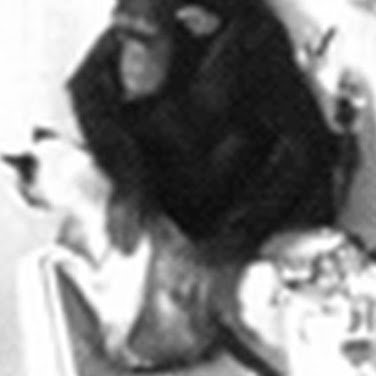Raymond B Clark
age ~61
from Lancaster, KY
- Also known as:
-
- Ray B Clark
- Phone and address:
-
6020 Lexington Rd, Lancaster, KY 40444
(859)5485104
Raymond Clark Phones & Addresses
- 6020 Lexington Rd, Lancaster, KY 40444 • (859)5485104
- Lexington, KY
- Bryantsville, KY
- Harrodsburg, KY
Wikipedia References

Raymond Clark (Engineer)
Lawyers & Attorneys
Resumes

Raymond Clark St. Louis, MO
view sourceWork:
City of St. Louis Refuse Division
2007 to 2013 Chouteau
2000 to 2007
Transporter South Grand
1992 to 2000
Machine Operator/ Forklift Driver Mopped
1998 to 1999
2007 to 2013 Chouteau
2000 to 2007
Transporter South Grand
1992 to 2000
Machine Operator/ Forklift Driver Mopped
1998 to 1999
Education:
Soldan High School
1986
High School Diploma
1986
High School Diploma
License Records
Raymond Dwight Clark
License #:
93117 - Expired
Issued Date:
Jul 1, 1990
Renew Date:
Sep 30, 1991
Expiration Date:
Sep 30, 1991
Type:
Registered Nurse
Name / Title
Company / Classification
Phones & Addresses
SOM OHIO LLC
OBTEGO, INC
CLARK WATER INC
PERKINS & WILL OF OHIO, L.L.P
SECOND STREET PHOTOGRAPHY, LLC
Incorporator
CLARK BROTHERS CONSTRUCTION COMPANY, INC
RAY'S MEMORY LANE INC
AURORA LITES TACKLE LLC
Us Patents
-
Method And Apparatus For Expanding A Color Gamut
view source -
US Patent:6867883, Mar 15, 2005
-
Filed:Jan 21, 2000
-
Appl. No.:09/489226
-
Inventors:Tomasz Jan Cholewo - Lexington KY, US
Raymond Edward Clark - Lexington KY, US -
Assignee:Lexmark International, Inc. - Lexington KY
-
International Classification:H04N001/60
-
US Classification:358 19, 358518, 358520
-
Abstract:A color gamut in a first color space is expanded to utilize a larger gamut in a second color space. The gamut in the first color space is first converted by black generation or geometric distortion to a gamut in a second color space. The gamut in the second color space is converted by forward mapping to a gamut in a third color. The gamut in the third color space is expanded by linear rescaling. Finally, the linearly rescaled gamut is mapped to a gamut in the second color space through inverse modeling to form a final color gamut. The final color gamut utilizes the gamut available in the second color space, which is larger than the gamut available in the first color space.
-
Gamut Mapping Algorithm For Business Graphics
view source -
US Patent:6956581, Oct 18, 2005
-
Filed:Sep 19, 2002
-
Appl. No.:10/247590
-
Inventors:Chengwu Cui - Lexington KY, US
Raymond E. Clark - Lexington KY, US -
Assignee:Lexmark International, Inc. - Lexington KY
-
International Classification:G06K009/00
H04N001/60 -
US Classification:345589, 345590, 345597, 348557, 358518, 358520, 382162, 382166, 382167
-
Abstract:A gamut mapping algorithm especially adapted for printing business and presentation graphics with highly chromatic colors. To perform gamut mapping, gamut triangles corresponding to an input gamut and output gamut are defined and used to scale the lightness and chroma of input colors. The rescaled input colors are then mapped to the output triangle along lines of constant chroma. The chroma of the remapped colors is enhanced by moving the remapped colors toward the apex of the output gamut triangle along a line passing through the remapped color and the apex of the output gamut triangle.
-
Methods And Systems For Estimating Single Or Multi-Color Toner Coverage On A Printer Page
view source -
US Patent:7359088, Apr 15, 2008
-
Filed:Oct 16, 2003
-
Appl. No.:10/688110
-
Inventors:Raymond E. Clark - Georgetown KY, US
David K. Lane - Stamping Ground KY, US
Cary P. Ravitz - Lexington KY, US -
Assignee:Lexmark International, Inc. - Lexington KY
-
International Classification:H04N 1/52
H04N 1/56 -
US Classification:358 19, 358504, 358536
-
Abstract:Methods and systems for estimating single or multi-colored toner coverage on a printed page. One method includes generating color plane bitmaps corresponding to each color in a contone bitmap and calculating pixel coverage values for each of the color plane contone bitmaps. Another method includes receiving image data to be printed, generating color separations for the image data corresponding to available toner colors, printing each color separation on a printed page, scanning each printed page comprising the color separation and calculating toner coverage on each of the scanned printed pages.
-
Optimization Techniques During Processing Of Print Jobs
view source -
US Patent:7385729, Jun 10, 2008
-
Filed:Mar 26, 2004
-
Appl. No.:10/810140
-
Inventors:Raymond Edward Clark - Georgetown KY, US
Ning Ren - Lexington KY, US
Martin Geoffrey Rivers - Lexington KY, US -
Assignee:Lexmark International, Inc. - Lexington KY
-
International Classification:H04N 1/40
-
US Classification:358 19, 382283
-
Abstract:Methods for processing print jobs in rendering devices include constructing display list objects for to-be-printed objects and determining if two or more sequential objects are combinable. If so, a masked indexed image replaces the objects and has dimensions matching the overall bounding box size of the combinable objects. Indexed image values of the masked indexed image correspond to look up table entries, in turn, corresponding to color values of pixels of the combined object. In this manner, memory space is made available. Determining combinability of objects occurs by examining whether the objects are opaque, have regions as stencils, have similar color intensities, have the same halftone screens, share comparably sized or proximate bounding boxes or for other reasons. Head and tail pointers delineate sequential objects on the display list. The masked indexed image can be uni- or multi-dimensional.
-
Rendering Optimization Method And System
view source -
US Patent:7630582, Dec 8, 2009
-
Filed:Nov 15, 2005
-
Appl. No.:11/274034
-
Inventors:Raymond Edward Clark - Georgetown KY, US
Robert Lawrence Cook - Lexington KY, US
Ning Ren - Lexington KY, US
Martin Geoffrey Rivers - Lexington KY, US -
Assignee:Lexmark International, Inc. - Lexington KY
-
International Classification:G06K 9/36
G06K 15/00 -
US Classification:382291, 382112, 358 312
-
Abstract:A method includes receiving a plurality of objects included within a print job. A first object of the plurality of objects and a second object of the plurality of objects are processed to define a first overlapping region between the first and second objects. The first object is modified to remove the first overlapping region, thus generating a modified first object.
-
Processing Print Jobs
view source -
US Patent:7835030, Nov 16, 2010
-
Filed:Mar 26, 2004
-
Appl. No.:10/810004
-
Inventors:Michael Donald Bender - Nicholasville KY, US
Raymond Edward Clark - Georgetown KY, US
Robert Laurence Cook - Lexington KY, US
Ning Ren - Lexington KY, US
Martin Geoffrey Rivers - Lexington KY, US -
Assignee:Lexmark International, Inc. - Lexington KY
-
International Classification:G06F 15/00
G06K 1/00
H04N 1/60
G06F 3/12 -
US Classification:358 19, 358 113
-
Abstract:Methods for processing print jobs include flagging, or not, to-be-printed objects having PDL-specified math or logic functions requiring hard processing operations, such as two or more inputs. The math or logic functions preferably reside in ink attributes of display list objects corresponding to the to-be-printed objects. To-be-printed pages of the print job become divided into bands. Bands with to-be-printed objects therein have band display lists constructed in the event the to-be-printed objects become flagged. On a band-by-band basis, if bands have band display lists flagged with hard processing operations, contone bands become constructed. The contone bands result from color information blending between overlapping pixels of to-be-printed objects or an object and a contone page. A contone page includes color information of the to-be-printed page in a first color space. To-be-printed objects are rendered in a second color space in device specific page(s) of memory.
-
Optimizing To-Be-Printed Objects During Print Job Processing
view source -
US Patent:7859716, Dec 28, 2010
-
Filed:Nov 8, 2004
-
Appl. No.:10/983826
-
Inventors:Raymond E. Clark - Georgetown KY, US
Robert L. Cook - Lexington KY, US
Ning Ren - Lexington KY, US
Martin G. Rivers - Lexington KY, US -
Assignee:Lexmark International, Inc. - Lexington KY
-
International Classification:G06F 15/00
G06K 9/00 -
US Classification:358 19, 382100
-
Abstract:Methods for processing print jobs in rendering devices include representing multiple to-be-printed objects with fewer such objects before processing of the objects occurs. In this manner, processing and memory requirements are optimized. Examples include utilizing a single raster operation function of one object for an entirety of objects; using fewer raster operation functions than originally required for the entirety of objects; creating a no processing (NOP) situation; and effectively creating a mask. Other aspects include modifying raster operation functions of one or more objects to have fewer variables than originally specified by the print job. Printers having stored or accessible computer executable instructions for performing the steps are also disclosed as are host devices that may direct or control the printer to perform the same.
-
Processing Print Jobs
view source -
US Patent:7990578, Aug 2, 2011
-
Filed:Nov 15, 2010
-
Appl. No.:12/946808
-
Inventors:Michael Donald Bender - Nicholasville KY, US
Raymond Edward Clark - Georgetown KY, US
Robert Laurence Cook - Lexington KY, US
Ning Ren - Lexington KY, US
Martin Geoffrey Rivers - Lexington KY, US -
Assignee:Lexmark International, Inc. - Lexington KY
-
International Classification:G06F 15/00
G06K 1/00
H04N 1/60
G06F 3/12 -
US Classification:358 19, 358 113
-
Abstract:Methods for processing print jobs include flagging, or not, to-be-printed objects having PDL-specified math or logic functions requiring hard processing operations, such as two or more inputs. The math or logic functions preferably reside in ink attributes of display list objects corresponding to the to-be-printed objects. To-be-printed pages of the print job become divided into bands. Bands with to-be-printed objects therein have band display lists constructed in the event the to-be-printed objects become flagged. On a band-by-band basis, if bands have band display lists flagged with hard processing operations, contone bands become constructed. The contone bands result from color information blending between overlapping pixels of to-be-printed objects or an object and a contone page. A contone page includes color information of the to-be-printed page in a first color space. To-be-printed objects are rendered in a second color space in device specific page(s) of memory.
Youtube
Googleplus

Raymond Clark
Education:
Chatham College
Tagline:
I love meeting new friends.

Raymond Clark
Education:
DeVry University

Raymond Clark
Education:
Byron middle

Raymond Clark
Relationship:
Married
About:
President of the Mule Train, V.P. of the PR Unit, Past Wagon Master (2010) of the Nomads and Editor of the Al Kaly Shriners Dust Magazine

Raymond Clark

Raymond Clark
Tagline:
Single and enjoying life
Bragging Rights:
3 Kids, Two girls 21,14 and 1 Boy 9 single

Raymond Clark
Relationship:
Single

Raymond Clark
Plaxo

Raymond Clark
view sourceMyspace

Raymond Clark
view sourceLocality:
BASKETBALL CITY(PHILLY), Pennsylvania
Gender:
Male
Birthday:
1950

Raymond Clark
view sourceGet Report for Raymond B Clark from Lancaster, KY, age ~61








